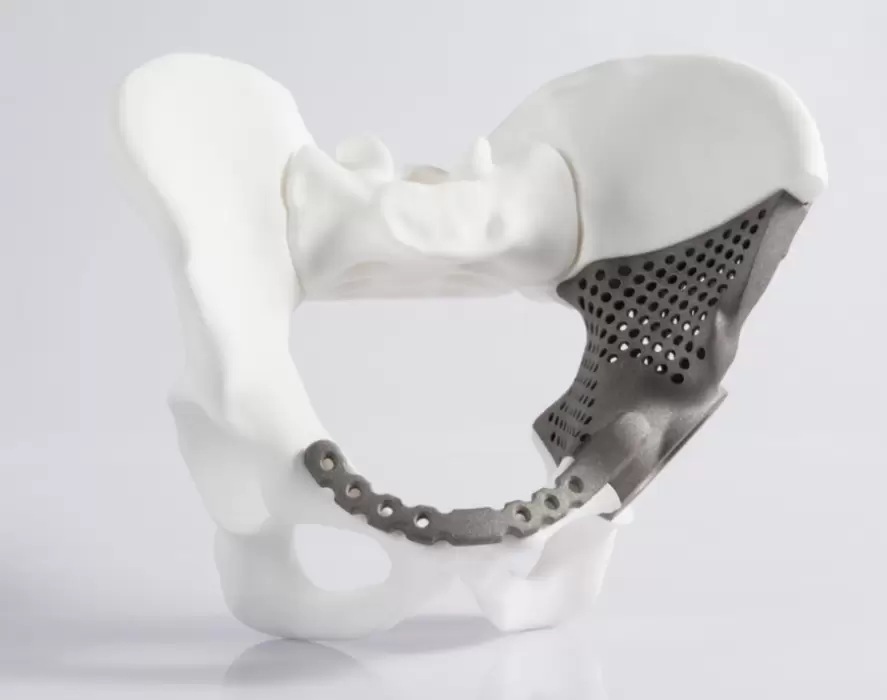Additive manufacturing (AM) is a technology that can create complex and customized orthopedic implants and devices. Learn about the advantages and drawbacks of AM for orthopedic applications.
- Introduction
- What is Additive Manufacturing?
- How is Additive Manufacturing Used in Orthopedics?
- Benefits of Additive Manufacturing for Orthopedics
- Challenges of Additive Manufacturing for Orthopedics
- Conclusion
Introduction
Orthopedic devices and implants are used to treat various musculoskeletal conditions, such as fractures, arthritis, deformities, and injuries. These devices and implants need to be designed and manufactured with high precision, quality, and biocompatibility to ensure optimal functionality and safety for the patients. However, traditional manufacturing methods, such as casting, forging, machining, and molding, have some limitations in terms of complexity, customization, and cost. Therefore, there is a growing interest in using additive manufacturing (AM) as an alternative or complementary technology for orthopedic applications.
What is Additive Manufacturing?
Additive manufacturing (AM), also known as 3D printing, is a process that creates objects by depositing layers of material on top of each other, following a digital model. AM can use various types of materials, such as metals, polymers, ceramics, composites, and biological materials. AM can also create complex geometries and structures that are difficult or impossible to achieve with traditional methods. AM has been used for various industrial sectors, such as aerospace, automotive, medical, dental, and consumer goods.
How is Additive Manufacturing Used in Orthopedics?
AM has been used for orthopedic applications in several ways. One of the most common uses is to create customized implants and devices that match the patient's anatomy and biomechanics. For example, AM can create patient-specific hip or knee replacements, spinal cages, craniofacial implants, bone scaffolds, and surgical guides. Another use of AM is to create porous structures that can enhance the integration of the implant with the surrounding bone tissue. For example, AM can create porous titanium implants that have high mechanical strength and biocompatibility. A third use of AM is to create bioactive or bioresorbable materials that can stimulate bone regeneration or degrade over time. For example, AM can create ceramic or polymer scaffolds that can release growth factors or drugs to promote bone healing.
Benefits of Additive Manufacturing for Orthopedics
AM offers several benefits for orthopedic applications compared to traditional methods. Some of these benefits are:
- Customization: AM can create implants and devices that are tailored to the patient's specific needs and preferences. This can improve the fit, function, comfort, and aesthetics of the implant or device.
- Complexity: AM can create complex shapes and structures that are difficult or impossible to achieve with traditional methods. This can enhance the performance and functionality of the implant or device.
- Cost: AM can reduce the material waste and inventory costs associated with traditional methods. AM can also enable on-demand production and reduce the lead time and transportation costs.
- Innovation: AM can enable the development of new designs and materials that can improve the outcomes and quality of life for the patients.
Challenges of Additive Manufacturing for Orthopedics
Despite the benefits of AM for orthopedics, there are also some challenges that need to be addressed before AM can be widely adopted in this field. Some of these challenges are:
- Regulation: AM products need to comply with strict regulatory standards and requirements to ensure their safety and efficacy. This may involve extensive testing, validation, certification, and documentation processes that can be time-consuming and costly.
- Quality: AM products need to have consistent quality and reliability across different batches and machines. This may require rigorous quality control and assurance measures, such as monitoring, inspection, calibration, verification, and traceability.
- Education: AM products need to have adequate education and training for the surgeons, engineers, technicians, patients, and other stakeholders involved in their design, production, use, and maintenance. This may require developing new curricula, guidelines, protocols, and best practices for AM applications in orthopedics.
- Ethics: AM products need to consider the ethical implications and social acceptance of their use. This may involve addressing issues such as informed consent, privacy, ownership,
Orthopedic additive manufacturing has revolutionized the way we approach orthopedic surgeries and medical device manufacturing. With 3D printing technology, orthopedic implants can now be custom-designed and printed to fit the specific needs of individual patients. Additive manufacturing for medical devices has also made it possible to create implants with complex geometries that were previously impossible to achieve with traditional manufacturing methods. 3D printing in orthopedics has been particularly beneficial for bone replacement procedures, including bone graft surgery and joint replacement. The orthopedic additive manufacturing market is growing rapidly, with technology advancements allowing for the creation of 3D printed bone implants and spinal implants. Additive manufacturing for orthopedic research has also become increasingly popular, allowing researchers to create models for testing and training purposes. The use of 3D printing for prosthetics in orthopedics and custom orthotics has also gained attention, providing patients with personalized solutions for their orthopedic needs. With the continued development of orthopedic additive manufacturing technology, the possibilities for improving patient outcomes and advancing orthopedic research are endless.




